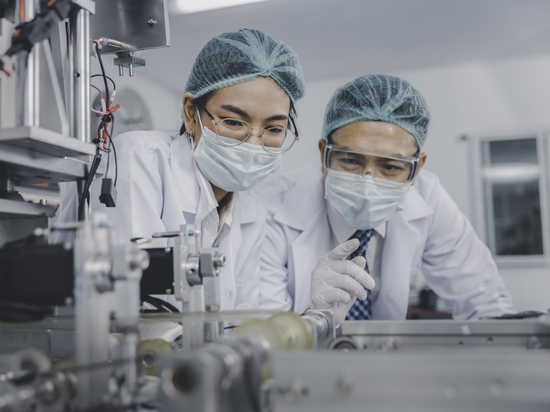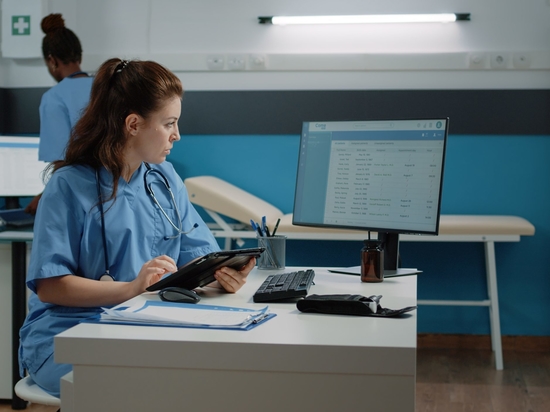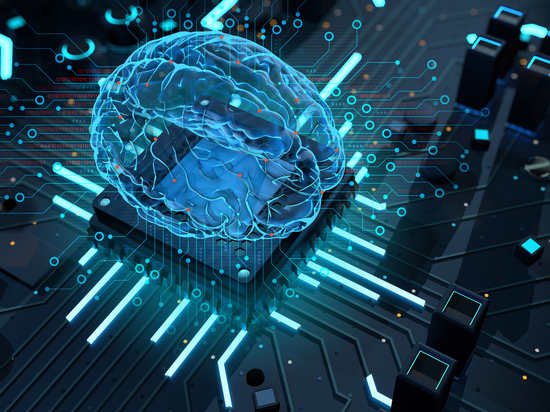
#Industry News
WHAT IS THE FUTURE OF MEDICAL TRANSCRIPTION?
Technology's impact on transcription for providers and healthcare
Medical workers are highly-skilled, educated professionals. The hospital of the future is the one that respects and preserves their precious time.
To create the hospital of the future, modern medical organizations need to invest in the software and solutions of the future. Medical transcription is one such tool. It has already started moving away from manual transcription of traditional audio notes into digital note taking, voice recognition, and machine learning transcription.
We’re going to show you these changes, how modern methods are tackling the solution, and how to prepare your staff and equipment for what the future will bring.
Manual medical transcription is on a slow but steady decline
While manual medical transcription will likely have a role to play in the next ten years or so, the numbers are showing a continuous employment drop-off.
There were 57,400 medical transcriptionists in 2016. The Bureau of Labor Statistics right now puts the current number of medical transcriptionists in the US at 52,400. That’s a yearly average loss of about a thousand jobs a year. Expect those numbers to fall faster.
Manual transcription also creates opportunities for HIPAA violations
Part of the data-filled future of medicine is an increased focus on data security and HIPAA compliance. One of those easily-patchable security holes is the exporting of patient data to outside transcriptionists.
Example: “Best Medical Transcription,” a medical transcriptionist vendor in New Jersey, and the medical group that contracted with it, were fined over half a million dollars for mishandling the medical notes of over 1,600 patients.
These medical notes belonged to the patients of Virtua Medical Group, and were sent to “Best Medical Transcription” for, you guessed it, transcription. Somewhere in the process, the notes and transcriptions were uploaded to an unsecured FTP website that literally anyone could access. In fact, Google’s automated processes actually found the notes on the FTP server and indexed them into the search engine itself. For a time, the medical data of those 1,600 patients could be found with a simple Google search.
“Best Medical Transcription” was ultimately dissolved over the incident, with the owner himself having to pay additional fees and fines over the initial settlement.
Medical transcription software is getting bigger and better
Healthcare groups are increasingly turning to medical transcription software for their medical workers while preventing HIPAA violations. A few notable developments in automated medical transcription software can be attributed to:
Advancement in voice recognition technology
EMR and data-driven medical strategies increasing the demand for transcription
Budgetary concerns creating a need for a cheaper and faster alternative
According to Fortune Business Insights, the medical transcription software market in 2019 was 1.32 billion. It is predicted to reach 4.89 billion dollars though by 2027.
Advancement in voice recognition technology is making automated transcription more accurate. Machine learning and AI especially have made voice recognition and dictation software more accurate in recent years. Now most transcription software these days claim a 99 percent level of accuracy (though, these numbers reflect perfect lab conditions and not the complexities of human voices recorded in the real world).
EMR and data-driven medical strategies increase demand for automated voice transcription. The average American speaks at around 125 words per minute. That’s far faster than the average typing speed for doctors which in training was found to be around 30 words per minute. Dictating is nearly five times faster than typing.
These time savings really only come to fruition with transcription software that can quickly and accurately turn those audio files into text. Which, due to tech advancements, we have now.
Tighter budgets have less to spend on manual medical transcription. Hospital funds are spread thin and have less medical staff to do the work. Automated medical transcription saves on labor hours. Sure, it comes at a cost, but it can scale much more easily with very little increase of cost by volume.
Medical tablets will speed up and humanize note-taking
Traditionally, doctors and nurses took notes on paper during their visits with patients. Then, in-office computer stations took over, but they created a distance–the user is filling out digital paperwork with the monitor acting as a wall between doctor and patient. Or, worse, the doctor or nurse has their back to the patient completely.
That can be eliminated with medical transcription. Specifically, using the technology to transcribe hand-written notes to digital text. With specialty medical tablets, doctors and nurses can use a stylus to quickly jot down notes on the tablet itself during an office visit. Using natural language processing, medical tablets can turn that handwriting into digital text, and can even be programmed to know which fields of the EMR to fill in with those notes.
This method skips the audio-to-text process completely.
Ambient medical transcription software records notes on its own
The ultimate future of medical transcription might be software that detects medical and patient conversations and records them automatically.
This software, called “ambient medical transcription” or “ambient clinical intelligence,” was developed by companies like Nuance and DeepScribe. It uses AI and natural language processing to fully automate medical documentation including importing them directly into a patient’s EMR.
It works like this. The clinician turns on the app on a medical professional’s phone, medical cart computer, or medical tablet. Then, these ambient medical transcription apps work in the background to recognize, record, transcribe, and input all relevant medical data being discussed during the patient visit.
Like medical tablets, this ambient transcription software allows doctors and nurses to be more personal, friendly, and conversational, since they don’t have to focus so much on the details of note taking and EMR.
These ambient transcription programs are also useful for the growing recording and medical transcription needs of telehealth.
Closing Thoughts
To prepare for the future of medical transcription, hospitals and medical offices will need computers that can integrate hardware like mics and cameras with automated transcription software.
Reach out to an expert at Cybernet to learn more about how the features of specialized medical computers can dovetail with medical transcription software.






